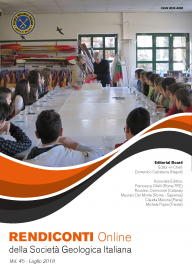
"Chi tutto il Fenomeno non spiega, non ne spiega nulla": Anton Lazzaro Moro e la confutazione dei sistemi di Burnet e Woodward
Marco Romano (1,2)
(1) Evolutionary Studies Institute (ESI), School of Geosciences, University of the Witwatersrand, Johannesburg, South Africa.
(2) Dipartimento di Scienze della Terra, Sapienza Università di Roma, P.le Aldo Moro, 5, 00185, Rome, Italy.
Corresponding author e-mail: marco.romano@uniroma1.it
Volume: 45/2018
Pages: 147-156
Abstract
Among historians of geology, the end of the seventeenth century is well known for the appearance of many detailed theories of the Earth which attempted to achieve great syntheses of natural processes and phenomena in order to explain the evolution of the Planet from its original state to the one that could be observed in the field. Among the most famous hypotheses are those advanced by English authors such as Burnet, Ray, Warren, Whiston, and Woodward. These theories met
great success on the European continent, and Italy was no exception: here, Woodward’s hypotheses were followed by the so-called School of Bologna, and strongly supported by important authors like Giuseppe Monti. However, it is exactly from the Italian peninsula that the most detailed and organic criticism to these theories of the Earth arose.
This paper focuses on the confutation made by Anton Lazzaro Moro: in his work "De' crostacei e degli altri marini corpi che si truovano su' monti", the Italian Abbot and naturalist reported the main hypotheses advanced by Burnet and Woodward, which he criticized and refuted. Significantly, Moro’s argument relied on the observation of geological outcrops in the field, where empirical evidence led him to reject the great syntheses proposed by British authors. Moro’s work reveals a remarkable awareness of the existence of a uniformity in natural laws: from this point of view, his thought bears a significant resemblance with the uniformitarian theories expressed by many naturalists in the following centuries.
Keywords
Get Full Text